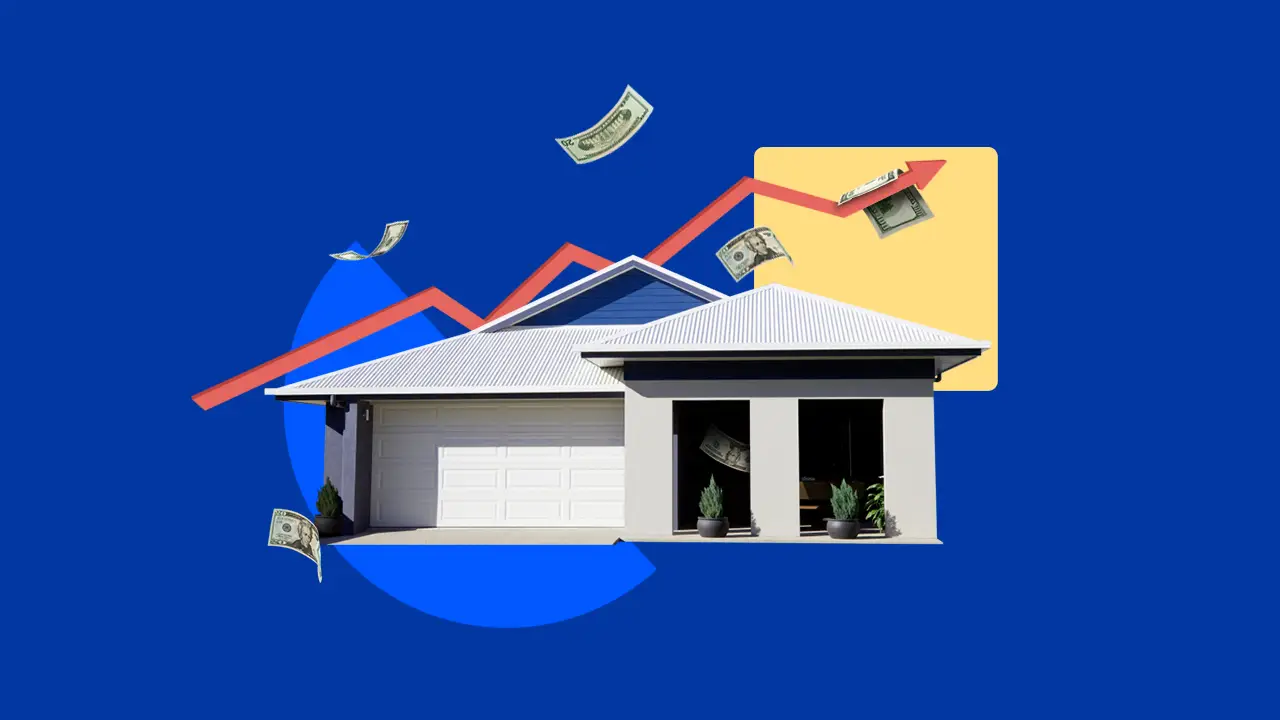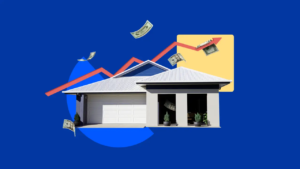Housing Market Cools as Buyers Retreat Amidst Economic Uncertainty
Market Momentum Stalls as Pending Home Sales Hit Record Low
The U.S. housing market is experiencing a significant slowdown, with pending home sales plummeting 3.4% year-over-year during the four-week period ending May 11, 2025. This decline has brought sales to their lowest level recorded for this time of year since the pandemic disruption of 2020.
The cooling trend stems from two primary factors creating a perfect storm for potential homebuyers. First, the financial equation has become increasingly challenging—home prices continue their upward trajectory while mortgage rates remain elevated. This combination has pushed the median monthly housing payment to a near-record $2,860, just $6 below the all-time high established the previous week. Second, economic anxiety has gripped many would-be buyers, with real estate professionals across Oregon, North Carolina, Texas, and Ohio reporting heightened consumer concerns about the overall economic outlook.
The timing of Easter falling within this year's measurement period (but not in the comparable 2024 timeframe) may have also contributed to the statistical decline, though this effect appears secondary to the broader market forces at play.
Consumer Psychology: Understanding Buyer Hesitation
"The market is experiencing unprecedented levels of consumer hesitation," notes Meme Loggins, a Portland-based real estate agent. "We're seeing potential buyers initiate their housing search only to withdraw when confronted with the stark reality of today's financing costs. Others express serious concerns about potential economic headwinds—from tariff impacts to recession possibilities and job security fears."
This psychological dimension is creating a fundamental shift in buyer behavior. Those proceeding with purchases are adopting more conservative approaches, with many opting for condominiums or smaller single-family homes that offer more manageable monthly payments and simplified maintenance requirements. Simultaneously, successful sellers are increasingly offering mortgage-rate buydowns to attract buyer interest in this challenging environment.
The Economic Paradox Affecting Housing Decisions
Recent economic developments have created something of a paradox for potential homebuyers. Chen Zhao, a leading economic researcher, points out that while the recent U.S. reduction of China tariffs has boosted stock market performance and decreased recession probabilities, it has simultaneously pushed mortgage rates higher.
"Homebuyers face a classic catch-22 situation," Zhao explains. "Without a complete elimination of the new tariffs or a significant economic downturn—which would bring its own set of financial challenges for many Americans—mortgage rates are unlikely to see meaningful reduction."
This complex interplay of economic factors has created a market where many buyers find themselves unable to proceed despite genuine housing needs and desires.
Supply and Opportunity: The Silver Lining for Buyers
While demand has diminished, the supply side tells a different story. New listings have increased by 5.1% compared to the same period last year, and total housing inventory has surged 14.3% year-over-year. Real estate professionals indicate this inventory growth partially reflects properties remaining on the market longer than usual during what traditionally would be a high-velocity spring selling season.
This supply-demand imbalance has created tangible opportunities for those buyers who remain active in the market. Nearly half of all sellers are now offering concessions—a significant shift from recent years' seller-dominated marketplace. Industry experts advise buyers to leverage this position by negotiating purchase prices downward or requesting seller assistance with repair costs and closing expenses.
Regional Variations Reveal Market Complexities
The cooling trend is far from uniform across the country, with significant regional variations highlighting the localized nature of real estate markets. Among the largest 50 metropolitan areas, several stand out with dramatically different trajectories.
In terms of median sale prices, Newark (12%), Philadelphia (11.1%), and Detroit (10.1%) lead with the strongest year-over-year growth. Conversely, Oakland (-4.3%), Dallas (-2.6%), and Austin (-2.5%) have experienced notable price declines.
Pending sales—perhaps the most forward-looking indicator—show Virginia Beach (7%), Detroit (5.1%), and Warren (3.1%) maintaining positive momentum despite the national downturn. Meanwhile, Miami (-19%), Fort Lauderdale (-18.4%), and New Brunswick (-14.1%) are experiencing particularly pronounced sales contractions.
New listing activity further illuminates these regional differences, with Washington D.C. (17%), Baltimore (13.2%), and Las Vegas (12.7%) seeing substantial increases in seller activity, while San Jose (-7.6%), Orlando (-7.1%), and West Palm Beach (-6.3%) face declining inventory additions.
Strategic Insights for Today's Housing Market
Is now a good time to buy a home despite economic uncertainty?
For financially secure buyers with stable employment, today's market presents strategic opportunities not seen in recent years. With nearly half of sellers offering concessions and negotiation leverage shifting toward buyers, those in a position to proceed can often secure better terms than at any point since before the pandemic. However, this opportunity must be balanced against the possibility of future price adjustments if economic conditions deteriorate further.
What strategies should today's homebuyers consider in this challenging market?
Success in today's market often requires adjusting expectations and employing creative approaches. Consider condominiums or smaller single-family homes that offer lower price points and reduced maintenance responsibilities. Be aggressive in negotiations, asking for seller concessions on both price and repair costs. Explore alternative financing options, including seller-assisted rate buydowns that can meaningfully reduce monthly payments. Finally, consider properties that have lingered on the market, where seller motivation may be highest.
Should sellers wait for better market conditions before listing?
While market conditions have shifted toward buyers, motivated sellers can still achieve successful outcomes by approaching the market strategically. Proper pricing is more critical than ever—properties perceived as overpriced are likely to sit without activity. Consider offering financing concessions, particularly rate buydowns that address buyers' monthly payment concerns without requiring substantial price reductions. Focus marketing efforts on highlighting features that appeal to today's more conservative buyers, such as energy efficiency, low maintenance requirements, and home office capabilities.
How might economic developments affect the housing market through 2025?
The housing market remains highly sensitive to both mortgage rate movements and broader economic conditions. If inflation continues moderating and geopolitical tensions ease, we could see gradual mortgage rate improvements that stimulate renewed buyer activity. Conversely, if economic uncertainty intensifies or employment conditions deteriorate, the market could experience further cooling despite relatively attractive mortgage rates by historical standards. Most housing economists anticipate a period of price stabilization rather than significant appreciation through the remainder of 2025, with regional variations reflecting local economic conditions and migration patterns.
What do current inventory levels tell us about future market direction?
The 14.3% year-over-year increase in housing inventory represents a significant shift from the extreme shortage conditions that dominated much of the post-pandemic market. This growing supply creates natural price pressure and gives buyers both more options and improved negotiating positions. However, inventory remains historically constrained in many markets, providing some fundamental price support. The continued growth of new listings (up 5.1%) suggests sellers remain willing to test the market despite challenging conditions, which could further increase buyer options as we move through 2025.










